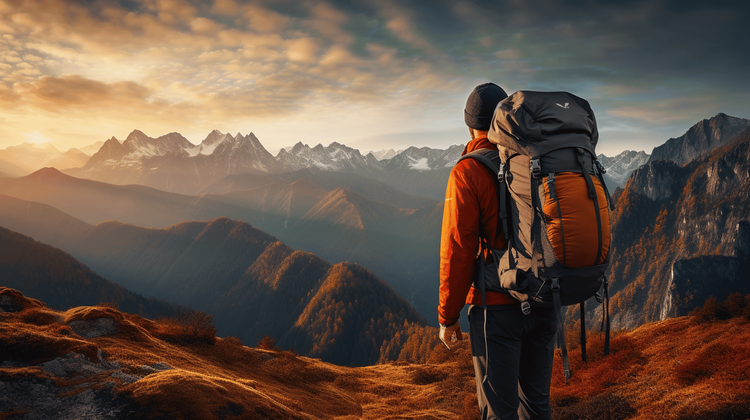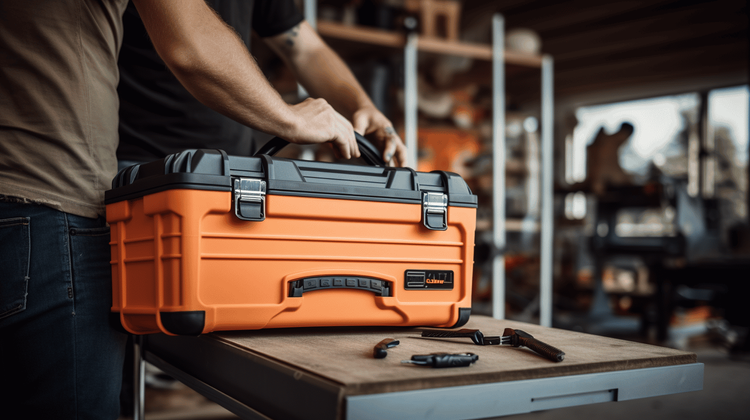Trekking Tips to Transform Your Hiking Experience

Trekking is a unique and thrilling adventure that allows you to disconnect from the hustle and bustle of everyday life and immerse yourself in nature. Whether you're an experienced hiker or a beginner, trekking offers an opportunity to challenge yourself physically, explore breathtaking landscapes, and create lifelong memories.
But before you embark on your trekking journey, it's essential to be prepared. From choosing the right destination to ensuring your safety and enjoying the experience to the fullest, there are several factors to consider. In this article, we will provide you with valuable tips and advice to transform your hiking experience. So, let's dive in and discover the key components to a successful trekking adventure!

- Trekking is a unique adventure that allows you to immerse yourself in nature.
- Preparing for a trekking trip is crucial to have a successful experience.
- This article will provide valuable tips and advice for a memorable trekking adventure.
Choosing the Right Trekking Destination
Trekking is an exhilarating outdoor activity that allows you to explore stunning landscapes, challenge yourself physically, and create unforgettable memories. However, choosing the right trekking destination is crucial to ensure a safe and enjoyable experience. Here are some tips to help you select the perfect location for your trek:
Consider Your Fitness Level
It's important to choose a trekking destination that matches your fitness level. If you're a beginner or have limited hiking experience, it's best to opt for a trek with moderate difficulty. On the other hand, if you're an experienced hiker looking for a more challenging adventure, you can consider treks with higher difficulty levels and rugged terrains. Assessing your fitness level will help you select a trek that you can comfortably complete while pushing yourself to the next level.
Research Different Terrains and Difficulty Levels
Before finalizing your trekking destination, take some time to research different terrains and difficulty levels. Each trekking route has its own unique characteristics and challenges. Some treks involve steep ascents and descents, while others take you through dense forests or across glaciers. Understanding the terrain and difficulty level of the trek will give you an idea of what to expect and whether it aligns with your interests and capabilities.
Explore Scenic Locations and Natural Wonders
One of the most rewarding aspects of trekking is being able to immerse yourself in the beauty of nature. Consider destinations that offer breathtaking views, scenic landscapes, and natural wonders like waterfalls, lakes, or snow-capped mountains. Research the highlights of each trekking route and choose a destination that resonates with your personal preferences. Whether it's the lush green valleys of the Himalayas or the stunning rock formations of Patagonia, selecting a trek that captivates your imagination will make your experience all the more memorable.
| Trekking Destination | Difficulty Level | Highlights |
|---|---|---|
| Annapurna Circuit | Moderate | Himalayan peaks, diverse landscapes |
| Torres del Paine | Challenging | Glaciers, granite peaks, wildlife |
| Mount Kilimanjaro | Difficult | Highest peak in Africa, diverse climate |
| Inca Trail | Moderate | Incan ruins, cloud forests |
Remember, every trekking destination has its own charm and allure. Consider factors such as geographical location, climate, and cultural significance to find a destination that resonates with your interests and desires. It's also worth checking the best time to visit to ensure you can fully enjoy the natural beauty and avoid unfavorable weather conditions.
By taking the time to choose the right trekking destination, you can embark on an adventure that aligns with your abilities and passions, ensuring an unforgettable and transformative experience. Happy trekking!
Essential Trekking Gear
When it comes to trekking, having the right gear can make all the difference in your overall experience. Proper equipment will not only keep you comfortable and safe but also allow you to fully enjoy the trekking adventure. Here are some essential trekking gear items that you should consider investing in:
1. Invest in a Good Quality Backpack
A backpack is one of the most important pieces of gear for any trekking adventure. It should be durable, comfortable to carry, and have enough storage space for all your essentials. Look for a backpack with features such as padded straps, a waist belt, and multiple compartments for better organization.
2. Choose the Right Footwear
Having the right footwear is crucial for trekking, as it provides support and protection for your feet. Invest in a pair of sturdy hiking boots that are waterproof, breathable, and offer good traction. Make sure they are properly broken in before your trek to avoid blisters and discomfort.
3. Dress in Layers and Pack Weather-Appropriate Clothing
Even if you're trekking in a warm climate, it's important to be prepared for unpredictable weather changes. Dress in layers, so you can easily adjust your clothing based on temperature fluctuations. Opt for moisture-wicking and quick-drying materials that will keep you dry and comfortable throughout the trek. Don't forget to pack a waterproof jacket and a hat to protect yourself from rain and sun.
4. Carry Essential Camping and Cooking Equipment
If your trek involves overnight stays, make sure you have the necessary camping and cooking equipment. This may include a lightweight tent, a sleeping bag, a camping stove, cookware, and utensils. Choose lightweight and compact options that won't weigh you down during your trek.
5. Don't Forget Other Essentials
In addition to the major gear items mentioned above, there are a few other essential items that you should have on your trekking checklist:
- Navigation tools: Carry a map, compass, or GPS device to help you navigate your way.
- Headlamp or flashlight: These are essential for nighttime treks or in case of emergencies.
- Sun protection: Pack sunscreen, sunglasses, and a hat to protect yourself from harmful UV rays.
- Water bottle and purifier: Stay hydrated by carrying a reusable water bottle and a water purifier to ensure a safe drinking water source.
- First aid kit: Be prepared for minor injuries with a well-stocked first aid kit that includes band-aids, antiseptic ointment, and pain relievers.
Remember, the key to choosing the right trekking gear is to prioritize comfort, durability, and functionality. Investing in high-quality gear will enhance your trekking experience and make you feel well-prepared for any adventure that comes your way.
"Having the right gear can significantly enhance your trekking experience. Prioritize comfort, durability, and functionality when choosing your trekking gear."
Physical Preparation for Trekking
Trekking can be a physically demanding activity, especially if you're planning to explore challenging terrains and spend multiple days hiking. To ensure that you have a successful and enjoyable trekking experience, it's essential to physically prepare yourself. Here are some tips to help you get ready:
Start Exercising and Building Stamina
Trekking requires endurance and stamina, so it's important to start exercising well in advance. Engaging in cardiovascular exercises like jogging, cycling, or swimming can help improve your overall fitness level and build endurance. Aim for at least 30 minutes of aerobic exercise, three to four times a week, to gradually increase your stamina.
Focus on Strength and Endurance Training
In addition to cardiovascular exercises, incorporating strength and endurance training into your routine can be beneficial. Exercises such as squats, lunges, and step-ups can help strengthen your lower body muscles, which are crucial for trekking. Incorporate exercises that target your core and upper body to improve overall body strength and stability.
Practice Hiking and Walking on Inclines
Trekking often involves walking uphill and downhill on uneven terrain. To prepare for this, include hikes or walks on hilly terrain in your training routine. This will help your muscles adapt to the demands of trekking and improve your balance and coordination. Gradually increase the distance and difficulty of your hikes to challenge yourself.
Improve Flexibility and Balance
Flexibility and balance are important for navigating tricky terrain during a trek. Incorporate stretching exercises like yoga or Pilates into your routine to improve flexibility and prevent injuries. Balance exercises such as single-leg stands or heel-to-toe walks can help enhance your stability and reduce the risk of falls.
Pro Tip: Don't forget to practice carrying a backpack during your training sessions. Start with a lighter load and gradually increase the weight to get your body accustomed to carrying the extra weight during the trek.
By following these physical preparation tips, you'll be able to tackle the challenges of trekking with confidence. Remember to listen to your body and take breaks when needed during your training sessions. Building strength, stamina, and flexibility will not only enhance your trekking experience but also reduce the risk of injuries along the way. So get started, lace up your hiking boots, and enjoy the beautiful outdoors!
Safety Tips and Emergency Preparedness
When it comes to trekking, safety should always be a top priority. Whether you're a seasoned hiker or a beginner, having the right knowledge and being prepared for emergencies can make a huge difference in ensuring a safe and enjoyable trekking experience. Here are some safety tips and emergency preparedness measures to keep in mind before you embark on your next adventure:
- Inform Others About Your Trekking Plans: Before heading out, make sure to inform a friend or family member about your trekking plans, including your destination, estimated time of return, and any alternative routes you might take. This way, someone will be aware of your whereabouts and able to alert authorities if you don't return on time.
- Stay Hydrated and Pack Enough Water: Dehydration is a common risk when trekking, especially in hot and arid environments. Make sure to carry an adequate supply of water and stay hydrated throughout your trek. Remember to drink regularly, even if you don't feel thirsty, to prevent dehydration.
- Pack Necessary First Aid Supplies: Accidents can happen on the trail, so it's important to be prepared with a basic first aid kit. Your kit should include essentials such as bandages, antiseptic wipes, pain relievers, and any personal medications you may need. Familiarize yourself with basic first aid procedures before your trek.
- Learn Basic Navigation Skills: It's important to have a basic understanding of navigation skills to avoid getting lost on the trail. Learn how to read a map, use a compass, and identify landmarks. You can also bring a GPS device or smartphone with a reliable map app as a backup.
"Safety is not an accident. It's a choice." - Unknown
- Be Aware of Weather Conditions: Weather conditions can change unexpectedly, so it's essential to keep an eye on the forecast before and during your trek. Dress appropriately for the weather and be prepared for sudden changes in temperature, wind, or precipitation.
- Monitor Your Surroundings: Pay attention to your surroundings and be aware of potential hazards such as unstable terrain, slippery surfaces, or falling rocks. Stay on designated trails and follow any safety signs or warnings posted along the way.
- Stay with Your Group and Stick to the Plan: Trekking with a group is not only more enjoyable but also safer. Always stay with your group and avoid separating from them unless necessary. If you need to make any changes to your trekking plans, communicate it with your group and make a decision together.
Remember, safety should always come first when trekking. By following these safety tips and being prepared for emergencies, you can have a worry-free and enjoyable trekking experience. Happy trails!
Leave No Trace Principles
When embarking on a trekking adventure, it's essential to be mindful of the impact we have on the environment. Leave No Trace is a set of principles that promote responsible outdoor practices and encourage us to preserve the natural beauty of our surroundings. By following these principles, we can minimize our impact and ensure that future generations can enjoy the same pristine landscapes we do. So let's dive into the key Leave No Trace principles:
Respect the Natural Environment and Wildlife
- Observe wildlife from a safe distance and avoid disturbing them. Use binoculars or zoom lenses to get a closer look.
- Do not feed wildlife, as it can disrupt their natural behaviors and cause dependence on human food.
- Be mindful of the flora and fauna around you. Stay on designated trails to avoid trampling vegetation, and avoid picking flowers or collecting rocks or artifacts.
Proper Waste Disposal
- Pack out everything you bring with you, including food wrappers, tissues, and other trash. Leave the environment as you found it.
- Dispose of human waste properly by digging a small hole at least 200 feet away from water sources, trails, and campsites. Bury the waste and cover it up afterward.
- To minimize waste, consider using reusable containers for food and drinks, and avoid single-use items whenever possible.
Minimize Noise Pollution
- Keep noise levels to a minimum to preserve the tranquility of the natural environment. Enjoy the sounds of nature and respect the peacefulness of the wilderness.
- Be considerate of other trekkers and campers by keeping voices low, especially during early morning or late evening hours.
- Avoid playing loud music or using noisy electronic devices. Instead, embrace the sounds of nature and let them be your soundtrack.
Stay on Designated Trails
- Stick to established trails and follow signs and markers to avoid damaging fragile ecosystems. Venturing off-trail can lead to soil erosion and destruction of vegetation.
- Walk in single file when on narrow paths to minimize the impact on the surrounding vegetation.
- Avoid taking shortcuts or creating new trails, as it can lead to ecological damage and the destruction of habitats.
Remember, the Leave No Trace principles not only protect the environment but also enhance your trekking experience. By respecting and preserving nature, you can fully immerse yourself in the beauty of your surroundings. So let's be responsible adventurers and leave nothing behind but footprints and take nothing away but memories.
"The clearest way into the Universe is through a forest wilderness." - John Muir
Enjoying the Trekking Experience
So you've planned your trekking adventure, packed your bags, and are ready to hit the trail. Now, it's time to focus on enjoying the experience to the fullest. Here are some tips to help you make the most of your trekking journey:
Pace Yourself and Take Breaks
Trekking can be physically demanding, especially if you're exploring challenging terrains or hiking at higher altitudes. It's important to pace yourself and listen to your body. Don't push yourself too hard and take breaks whenever needed. Enjoy the scenery, catch your breath, and recharge before continuing on your trek. Remember, it's not a race – it's about the journey.
Immerse Yourself in Nature
One of the greatest joys of trekking is being surrounded by the beauty of nature. Take the time to truly immerse yourself in your surroundings. Observe the flora and fauna, listen to the sounds of the wilderness, and breathe in the fresh air. Disconnect from the distractions of daily life and embrace the tranquility that nature provides. It's a chance to rejuvenate your mind, body, and soul.
Capture Memories with Photography
Bring along a camera or your smartphone to capture the breathtaking views and unforgettable moments during your trek. Take photos of the landscapes, wildlife encounters, and the people you meet along the way. These photographs will not only serve as souvenirs but also allow you to relive the beauty and memories of your trekking adventure for years to come.
Interact with Locals and Learn Their Culture
Trekking often brings you in contact with local communities and indigenous cultures. Take the opportunity to interact with the people you come across during your journey. Learn about their way of life, traditions, and customs. Engage in conversations, ask questions, and be respectful of their culture. This exchange of knowledge and understanding can enrich your trekking experience and leave a lasting impact.
"Trekking allows you to disconnect from the chaos of daily life and connect with the simplicity and beauty of the natural world. It's an opportunity to be present, live in the moment, and find a sense of peace and fulfillment." - Unknown
By following these tips, you can truly savor the trekking experience. Remember to leave no trace and respect the environment, enjoy the journey at your own pace, and embrace the wonders of nature. Happy trekking!
Continue reading: Post-Trek Recovery and Care
Post-Trek Recovery and Care
Congratulations on completing your trek! You've pushed your body and mind to new limits, explored breathtaking landscapes, and created memories that will last a lifetime. But your journey doesn't end at the finish line. Taking care of yourself after a trek is just as important as the preparation and the trek itself. Here are some post-trek recovery and care tips to help you bounce back and rejuvenate your body:
Stretching and Cooling Down
- Stretching: After a long trek, your muscles may feel tight and fatigued. Stretching can help improve flexibility, reduce muscle soreness, and prevent injury. Focus on stretching your legs, hips, back, and shoulders.
- Cooling Down: Cooling down after a trek helps bring your heart rate, body temperature, and breathing back to normal. Take a few minutes to walk slowly and then do some gentle stretching exercises.
Hydrate and Refuel
- Hydration: Trekking can leave you dehydrated, so it's important to replenish lost fluids. Drink plenty of water and electrolyte-filled drinks to rehydrate your body. You can also include hydrating foods like fruits and vegetables in your post-trek meals.
- Nutrition: After a physically demanding trek, your body needs proper nutrition to recover and rebuild. Include foods rich in protein, carbohydrates, and healthy fats in your post-trek meals. Opt for whole grains, lean proteins, fruits, vegetables, and nuts to replenish your energy levels.
Rest and Allow Time for Recovery
- Rest: Your body needs time to recover and heal after the physical exertion of trekking. Listen to your body and give yourself enough rest. Sleep well and take it easy for a few days post-trek to allow your muscles and joints to recover.
- Active Recovery: Engaging in light activities like gentle walks, yoga, or swimming can promote blood circulation and help with muscle recovery.
Remember, each person's recovery time may vary based on their fitness level and the intensity of the trek. If you experience any persistent pain or discomfort, it's important to consult a healthcare professional.

Incorporating these post-trek recovery and care tips into your routine will help you bounce back quicker and get ready for your next adventure. Enjoy the feeling of accomplishment, take care of your body, and cherish the memories of your incredible trekking experience!
"Recovery is not a race. You don't have to feel guilty if it takes you longer than you thought it would." - Jayne Williams
Conclusion
In conclusion, trekking can be an exhilarating and transformative experience that allows you to connect with nature, challenge yourself physically, and explore breathtaking landscapes. By following these tips and guidelines, you can enhance your trekking experience and ensure a safe and enjoyable adventure. Remember to plan and prepare adequately, invest in the right gear, and prioritize safety at all times. Additionally, practicing the Leave No Trace principles will help preserve the natural environment and ensure its beauty for future generations.
Most importantly, enjoy the journey and make the most of the trekking experience. Take the time to appreciate the surrounding beauty, immerse yourself in nature, and create lasting memories. Trekking is not only about reaching the summit but also about the moments and experiences along the way.
So, pack your bags, lace up your boots, and embark on a trekking adventure that will challenge you, inspire you, and leave you with a sense of accomplishment and wonder. Whether you're a seasoned trekker or a beginner, these tips will help you make the most of your next hiking expedition. Embrace the adventure, push your limits, and let the mountains captivate your heart. Happy trekking!
Frequently Asked Questions
- What equipment do I need for trekking?Some essential equipment for trekking includes sturdy hiking boots, a backpack, appropriate clothing layers, a navigational tool (such as a map or GPS), a water bottle, a headlamp, and a first aid kit.
- How should I prepare for a trekking trip?To prepare for a trekking trip, it is important to engage in regular physical exercise, such as hiking or walking, to build endurance and strength. Additionally, research the trail you will be trekking, pack the necessary gear, and ensure you have a plan for emergencies.
- Are trekking poles necessary?Trekking poles can be beneficial as they provide stability, reduce strain on your knees and joints, and can help you maintain balance on uneven terrain. However, they are not necessary for all treks and depend on personal preference and the difficulty of the trail.
- How can I prevent altitude sickness while trekking?To prevent altitude sickness, it is important to acclimatize properly by ascending slowly, staying hydrated, and avoiding alcohol and smoking. It is also advisable to consult a healthcare professional for medication recommendations and to know the symptoms of altitude sickness.
- What are some safety tips for trekking?Some safety tips for trekking include informing someone about your trekking plans, checking the weather forecast, sticking to marked trails, carrying essential safety equipment, staying hydrated, and being aware of your surroundings and wildlife.




